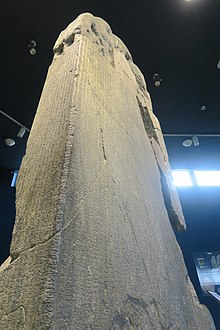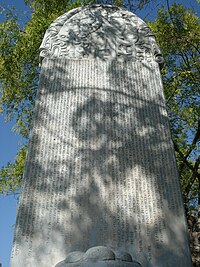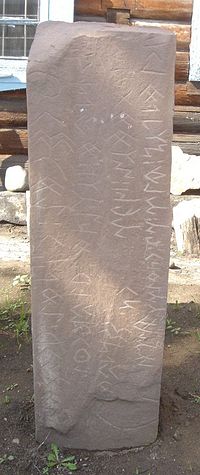Orkhon Inscriptions



The Orkhon inscriptions (or Orkhon), also called Turkic runes, are the oldest known examples of writing in languages belonging to the large linguistic family of the Turkic languages, whose geographical area extends from western China to the Balkans, so its first writings appear in the interior of Central Asia.
They were written on two monoliths erected in the Orkhon Valley (Mongolia) between the years 732 and 735 in honor of two Turkic princes Köktürks called Kütigin and Bilge Kagan.
The inscriptions were discovered and published by Russians: Nikolai Yádrintsev discovered them during an expedition to the Orkhon Valley, present-day Mongolia, in 1889 and Vasili Radlov published them. They were then deciphered by the Danish philologist Vilhelm Thomsen in 1893. The writing is very similar to that which appeared on monuments from the time of Tu-jue (突厥, pinyin: tu2 jue2 sup>), in China during the Tang dynasty.
The inscriptions are part of the heritage site called "Orkhon Valley Cultural Landscape" declared a World Heritage Site by UNESCO in 2004.
Contenido relacionado
International Committee of the Red Cross
Iruelos
University of Santiago de Compostela